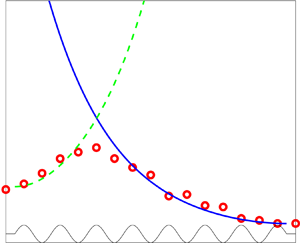Crossref Citations
This article has been cited by the following publications. This list is generated based on data provided by
Crossref.
Li, Yuan
Zhang, Chi
Cai, Yu
Xie, Mingxiao
Qi, Hongshuai
and
Wang, Yigang
2021.
Wave Dissipation and Sediment Transport Patterns during Shoreface Nourishment towards Equilibrium.
Journal of Marine Science and Engineering,
Vol. 9,
Issue. 5,
p.
535.
Zhang, Haiming
Tao, Aifeng
Tu, Junhao
Su, Junwei
and
Xie, Shuya
2021.
The Focusing Waves Induced by Bragg Resonance with V-Shaped Undulating Bottom.
Journal of Marine Science and Engineering,
Vol. 9,
Issue. 7,
p.
708.
Zhang, Zhi
Zhang, Yuquan
Zhang, Jisheng
Zheng, Yuan
Zang, Wei
Lin, Xiangfeng
and
Fernandez-Rodriguez, E.
2021.
Experimental study of the wake homogeneity evolution behind a horizontal axis tidal stream turbine.
Applied Ocean Research,
Vol. 111,
Issue. ,
p.
102644.
Chi, Shan-hang
Zhang, Chi
Sui, Ti-ti
Cao, Zhu-bin
Zheng, Jin-hai
and
Fan, Jiang-shan
2021.
Field observation of wave overtopping at sea dike using shore-based video images.
Journal of Hydrodynamics,
Vol. 33,
Issue. 4,
p.
657.
Zhang, Di
Wang, Gang
Feng, Xi
and
Feng, Weibing
2022.
Analytical and numerical investigation of edge waves near a vertical breakwater over a convex bottom.
Ocean Engineering,
Vol. 266,
Issue. ,
p.
112923.
Xu, Wei
Chen, Chun
Htet, Min Han
Sarkar, Mohammad Saydul Islam
Tao, Aifeng
Wang, Zhen
Fan, Jun
and
Jiang, Degang
2022.
Experimental Investigation on Bragg Resonant Reflection of Waves by Porous Submerged Breakwaters on a Horizontal Seabed.
Water,
Vol. 14,
Issue. 17,
p.
2682.
Gupta, Akanksha
and
Guha, Anirban
2022.
A new Lagrangian drift mechanism due to current–bathymetry interactions: applications in coastal cross-shelf transport.
Journal of Fluid Mechanics,
Vol. 952,
Issue. ,
Peng, Ji
Tao, Ai-feng
Fan, Jun
Zheng, Jin-hai
and
Liu, Yu-ming
2022.
On the Downshift of Wave Frequency for Bragg Resonance.
China Ocean Engineering,
Vol. 36,
Issue. 1,
p.
76.
Fan, Jun
Tao, Aifeng
Zheng, Jinhai
and
Peng, Ji
2022.
Numerical Investigation on Temporal Evolution Behavior for Triad Resonant Interaction Induced by Steady Free-Surface Flow over Rippled Bottoms.
Journal of Marine Science and Engineering,
Vol. 10,
Issue. 10,
p.
1372.
Li, Yuan
Zhang, Chi
Dai, Weiqi
Chen, Dake
Sui, Titi
Xie, Mingxiao
and
Chen, Songgui
2022.
Laboratory investigation on morphology response of submerged artificial sandbar and its impact on beach evolution under storm wave condition.
Marine Geology,
Vol. 443,
Issue. ,
p.
106668.
Cao, Xiangming
Shi, Jian
Zhang, Chi
and
Zheng, Jinhai
2023.
Inter-comparison of wave skewness and asymmetry estimation using wavelet, Fourier and statistical methods.
Ocean Engineering,
Vol. 268,
Issue. ,
p.
113382.
Gao, Junliang
Shi, Huabin
Zang, Jun
and
Liu, Yingyi
2023.
Mechanism analysis on the mitigation of harbor resonance by periodic undulating topography.
Ocean Engineering,
Vol. 281,
Issue. ,
p.
114923.
Fan, Jun
Tao, Ai-feng
Shi, Mo-quan
Li, Ying
and
Peng, Ji
2023.
Flume Experiment Investigation on Propagation Characteristics of Tidal Bore in A Curved Channel.
China Ocean Engineering,
Vol. 37,
Issue. 1,
p.
131.
Zhang, Jisheng
Wang, Guohui
Lin, Xiangfeng
Zhou, Yudi
Wang, Risheng
and
Chen, Hao
2023.
Experimental investigation of wake and thrust characteristics of a small-scale tidal stream turbine array.
Ocean Engineering,
Vol. 283,
Issue. ,
p.
115038.
Fan, Jun
Tao, Aifeng
Liu, Jianhao
Wang, Gang
and
Zheng, Jinhai
2025.
Detuning of triad resonance induced by steady free-surface flow over rippled bottoms.
Physics of Fluids,
Vol. 37,
Issue. 1,
Fan, Jun
Tao, Aifeng
and
Zheng, Jinhai
2025.
Proceedings of 11th International Conference on Coastal and Ocean Engineering.
Vol. 423,
Issue. ,
p.
162.
Wu, Fei
Yin, Zegao
and
Gao, Chengyan
2025.
Hydrodynamic effects induced by constructed oyster reefs on a slope.
Physics of Fluids,
Vol. 37,
Issue. 7,
Goyal, Deepali
Hota, Tapan Kumar
and
Martha, S. C.
2025.
Influence of ocean currents and surface tension on class II Bragg resonance using multi-scale analysis.
Physics of Fluids,
Vol. 37,
Issue. 3,
Fan, Jun
Tao, Aifeng
Zhang, Haiming
Wang, Gang
Wang, Lei
Shao, Zhuxiao
and
Zheng, Jinhai
2026.
Three-dimensional numerical investigation on focusing waves induced by Bragg resonance over crossed rippled bottoms.
Ocean Engineering,
Vol. 343,
Issue. ,
p.
123293.



